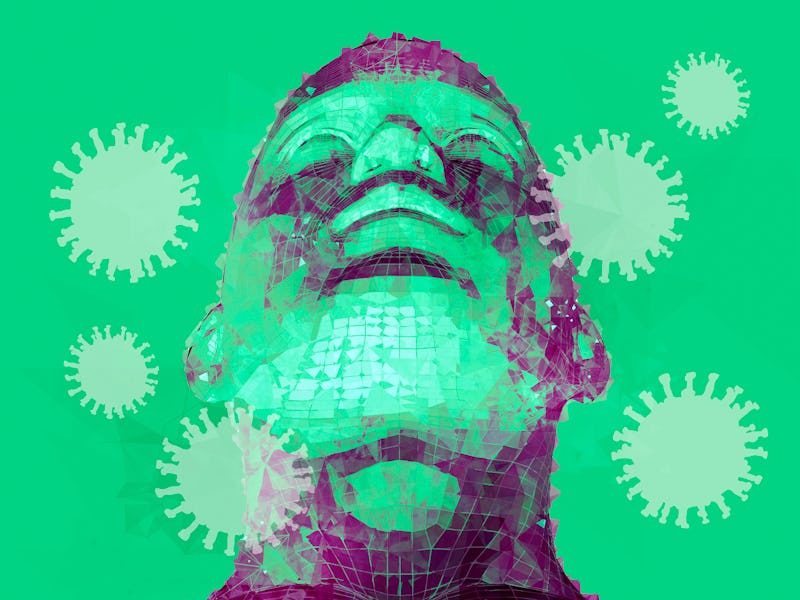How Covid-19 changes your skin: 4 unusual signs to look for
As if a fever and loss of smell wasn't enough...

The most common symptoms of Covid-19 are fever, a dry cough, and losing your sense of taste and smell. Other signs that are frequently seen include headaches, muscle and joint pain, nasal congestion, and fatigue.
Less common symptoms include rashes of various forms. These have been slower to be reported, partly due to the wide variety that has appeared in Covid-19 patients, making it more challenging to establish a consistent correlation.
Nevertheless, knowing how Covid-19 affects the skin is important. A recent study found that for 17% of Covid-19 patients with multiple symptoms, skin rashes were the first symptom to appear, while for 21% of patients rashes were their only symptom. Being able to identify the effects of Covid-19 on the skin may allow cases to be spotted earlier – or even picked up altogether in people who are otherwise asymptomatic. This could help limit transmission.
With that in mind, here are the four main types of skin changes to look out for, and the possible reasons why they occur.
4. Chilblain-like lesions
These are red, swollen, or blistering skin lesions that affect mainly the toes and soles of the feet, colloquially known as “Covid toes.” Over the course of one to two weeks, the lesions will become even more discolored and will flatten, and after this, they will spontaneously resolve without treatment.
A substantial number of these lesions have been seen, primarily in adolescents and young adults with no or only mild symptoms of COVID-19. They make up the majority of skin issues associated with the virus. In two international reports on different types of suspected Covid-related skin conditions, around 60% of patients with skin complaints reported these lesions.
However, given these lesions correlate with mild disease, many of the patients with them in these studies didn’t qualify for a Covid-19 test at the time, and 55% were otherwise asymptomatic. So while the swift rise of these lesions during the pandemic suggests they’re associated with Covid-19, direct confirmation of this hasn’t been established. It’s possible they’re caused by some other related factor.
The red swelling of these lesions often appears on the top of the toes, close to the nail.
Exactly when they appear is also somewhat unclear. In a study analyzing 26 patients with suspected Covid-related skin changes, 73% presented with chilblain-like lesions. None of the patients had respiratory symptoms and they were all COVID-negative at the onset of their lesions. An explanation is that these lesions appear only after a long delay – up to 30 days after infection.
The cause of these lesions has been debated. A possible culprit could be type 1 interferons, proteins that regulate the antiviral properties of the immune system. The theory is that high production of these interferons might result in patients rapidly clearing the coronavirus, but also cause injury to blood vessels and increased inflammation. This would explain the coincidence of mild or nonexistent disease, negative tests, and skin damage.
Another theory concerns ACE2, the molecule that the coronavirus uses to get inside cells. It is present on many types of cells, including those in the sweat glands, which are common on the palms of the hand and soles of the feet. This could make these areas particularly vulnerable to damage from the virus.
Or, it could be that damage to blood vessels, caused either by the immune response or the virus, leads to cell death and multiple mini blood clots in the toes.
3. Maculopapular rash
This term describes both flat and raised areas of discolored skin. A study of 375 patients in Spain found that 47% of patients with Covid-related skin changes had this kind of rash.
These were associated with more severe Covid-19 symptoms and were mainly found on the trunk in middle-aged to elderly patients. They tended to last 7-18 days, appearing 20-36 days after infection.
A suggested cause is the body’s immune system going into overdrive. In some patients, a hyperinflammatory phase occurs 7-10 days after infection, which leads to tissue damage and, potentially, more severe disease and death.
2. Hives
Also known as urticaria, these are raised areas of itchy skin. In a study involving four hospitals in China and Italy, 26% of Covid-19 patients that complained of skin changes presented with hives.
Hives typically precede or present at the same time as other symptoms, making them useful for diagnosis. They are more common among middle-aged patients and are associated with more severe diseases. Viral infections are a known trigger of hives, as they cause the breakdown of cells and the release of histamine through a cascade of reactions in the immune system.
Severe urticaria may feel like it is stinging or burning.
However, it’s important to remember that hives are also a noted side effect of many drugs that have been used to treat Covid-19, such as corticosteroids and remdesevir.
1. Vesicular lesions
These are clear fluid-filled sacs under the skin, similar to those seen in chickenpox. They are less common compared to the skin conditions above: in the previously mentioned Spanish study of skin changes associated with Covid-19, only 9% of patients had these vesicles.
However, they are thought to be a more specific indication of someone having Covid-19 than those already listed, and so are more useful for diagnosis. They appear to present in patients with the mild disease around 14 days after infection. It’s thought that they’re caused by prolonged inflammation, with antibodies attacking the skin and damaging its layers, resulting in fluid-filled sacs.
This article was originally published on The Conversation by Vassilios Vassiliou and Subothini Sara Selvendran at UCL. Read the original article here.